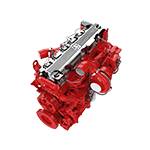ኅዳር . 10, 2024 04:49 Back to list
Exploring the Effects of Unbalanced Brake Drums on Vehicle Performance and Safety
Understanding Unbalanced Brake Drums Causes, Effects, and Solutions
Brake systems are crucial components in automotive safety, and the balance of those systems is vital for ensuring optimal performance. Among various brake systems, drum brakes are widely used, especially in heavy-duty vehicles. However, the phenomenon of unbalanced brake drums can pose significant challenges, affecting the vehicle’s handling and safety. In this article, we will explore the causes and effects of unbalanced brake drums while offering potential solutions for this issue.
What Are Brake Drums?
Before diving into the concept of unbalanced brake drums, it's essential to understand what brake drums are. A brake drum is a vital part of a drum brake system, which consists of a cylindrical metal housing. When the brake pedal is engaged, friction materials known as brake shoes expand against the interior surface of the drum, creating the necessary friction to slow down or stop the vehicle. While drum brakes are effective, their performance can be compromised if the drums are unbalanced.
Causes of Unbalanced Brake Drums
Unbalanced brake drums occur when there is an uneven distribution of weight or material on the drum. Several factors can contribute to this imbalance
1. Manufacturing Defects Poor quality control during the manufacturing process can lead to inconsistencies in the weight distribution of the brake drum. This might involve uneven material thickness or misalignment in the machining process.
2. Wear and Tear Over time, brake drums can wear unevenly due to various driving conditions, such as frequent stopping in heavy traffic or aggressive driving habits. Uneven wear can lead to an imbalance, affecting braking performance.
3. Environmental Factors Exposure to harsh weather conditions can also impact brake drums. For example, excessive moisture or road salt can contribute to corrosion, which may wear one area of the drum more than others.
4. Improper Installation When brake drums are installed incorrectly or not torqued to the specifications, it can lead to uneven stress distribution. This often results in unbalanced drums and impaired braking efficiency.
Effects of Unbalanced Brake Drums
The consequences of unbalanced brake drums can be both dangerous and detrimental to vehicle performance
. Here are some primary effectsunbalanced brake drums

1. Vibration and Noise One of the most immediate effects of unbalanced brake drums is increased vibration during braking. This can lead to a noticeable shaking of the vehicle, especially at higher speeds. Additionally, it may cause unusual noises, such as grinding or squeaking, indicating that something is wrong within the brake system.
2. Reduced Stopping Power Unbalanced drums can lead to uneven braking forces, meaning that some wheels may engage more effectively than others. This inconsistency can cause longer stopping distances and make it difficult to control the vehicle during braking.
3. Increased Wear on Components Continuous use of unbalanced brake drums can lead to premature wear on other components of the braking system, including brake shoes, wheel bearings, and suspension parts. This results in higher maintenance costs and the potential for more significant repairs down the line.
4. Safety Risks Ultimately, unbalanced brake drums can pose serious safety risks. The lack of control during braking can lead to accidents, particularly in emergency situations where every fraction of a second counts.
Solutions to Unbalanced Brake Drums
Addressing the issue of unbalanced brake drums is essential for maintaining vehicle safety and performance. Here are some recommended solutions
1. Regular Inspections Conduct routine checks of the brake system, including the condition of the brake drums. Look for signs of uneven wear, cracks, or other damage.
2. Professional Servicing If you suspect an imbalance, it’s best to seek professional help. Qualified mechanics can assess the brake drums, measure their balance, and recommend necessary repairs or replacements.
3. Proper Installation Ensure that any replacement brake components are installed correctly, following manufacturer guidelines. This will help prevent future imbalance issues.
4. Upgrading Brake Components If unbalanced drums are a persistent problem, consider investing in high-quality brake drums or upgrading to a disc brake system for improved performance and reliability.
Conclusion
Unbalanced brake drums are a critical issue that can profoundly affect vehicle performance and safety. By understanding the causes, effects, and solutions, drivers can take proactive measures to ensure their braking system remains in optimal condition. Regular maintenance and prompt addressing of any issues can help mitigate risks and enhance overall vehicle safety. Remember, when it comes to brakes, balance is key.
-
Premium Brake Drum Iveco – Durable Drum Brake Drum & Brake Shoe Solutions
NewsJul.08,2025
-
High-Performance Brake Drum Liza for Enhanced Safety Reliable Drum Brake Drum & Brake Shoe Solutions
NewsJul.08,2025
-
High-Quality Brake Drum MAZ – Durable Drum Brake Drum & Brake Drum and Brake Shoe for Optimal Performance
NewsJul.07,2025
-
High-Quality Brake Drum Kamaz for Reliable Performance Durable Drum Brake Drum & Brake Shoes
NewsJul.07,2025
-
High-Quality Brake Drum Kamaz for Reliable Performance Durable Drum Brake Drum & Brake Shoe Replacement
NewsJul.07,2025
-
Brake Drum Man - High-Quality Drum Brake Drum & Brake Drum and Brake Shoe Solutions
NewsJul.06,2025
